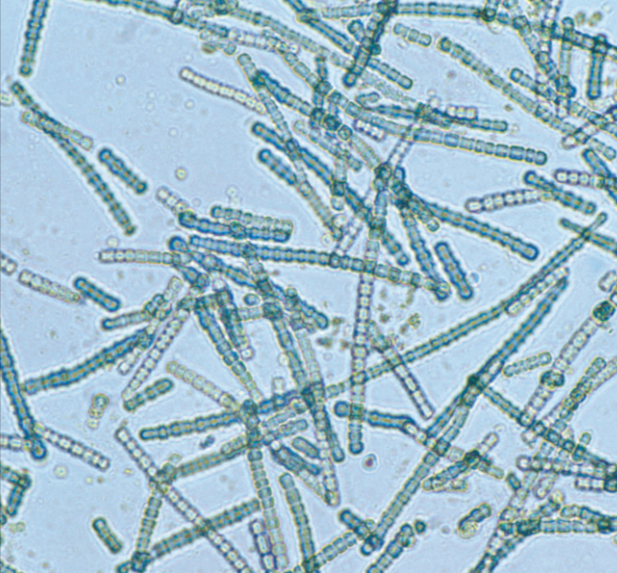Staff Report / July 17, 2025
A groundbreaking study published in mBio reveals that the harmful algal bloom (HAB) species Microcystis aeruginosa—a familiar threat to freshwater ecosystems—employs a chemical strategy to suppress competing algae, enhancing its dominance and toxicity.
Key findings:
- Antivitamin production: Researchers discovered that M. aeruginosa releases a suite of “thiamin antivitamins,” such as bacimethrin and methoxythiamin. These compounds closely mimic vitamin B₁ (thiamin) but act to block its essential role in enzyme function for other algae.
- Allelopathic suppression: In co-culture experiments, these antivitamins significantly impaired growth in the model green alga Chlamydomonas reinhardtii, especially thiamin-dependent mutant strains. Even trace concentrations were enough to stunt development—until true thiamin was added, which largely reversed the suppression.
- Environmental impact: Field evidence confirms the presence of bacimethrin in real water bodies, with levels peaking during Microcystis bloom events—reinforcing the ecological relevance of these laboratory results.
- Self-resilience: M. aeruginosa appears to carry genetic adaptations that allow it to resist its own antivitamins—a competitive edge enabling it to thrive while competitors falter.
Why this matters:
Harmful algal blooms have surged in both polluted and seemingly pristine lakes—including those in the Finger Lakes region. The blooms causing fish kills, animal poisonings, and disruptions to drinking water supplies. Traditional explanations focus on nutrient over-enrichment (e.g., phosphorus, nitrogen), but this study highlights a new biochemical mechanism giving M. aeruginosa an upper hand when essential vitamins are scarce.
Looking ahead:
Lead author Mohammad Yazdani and collaborators suggest that targeting antivitamin production or blocking its effects could present innovative strategies for bloom mitigation. As thiamin scarcity is common in aquatic ecosystems, disrupting this chemical warfare may limit Microcystis dominance without resorting to nutrient reduction alone.
See the study here: https://journals.asm.org/doi/10.1128/mbio.01608-25









